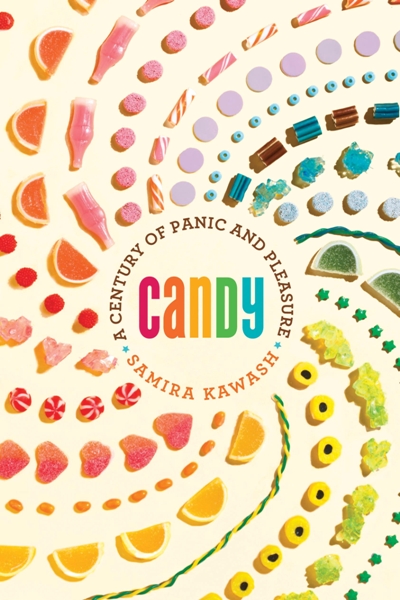
|
Hey, it’s late in the afternoon, just before the Fourth of July weekend and I’m asking you to read a polemic on whether candy’s a treat or food? Puhleeze, give me a break.

|
| Bernie Pacyniak |
OK, you don’t have to read this now nor even during the next few days of celebrating our nation’s birthday, which means barbecuing, hanging with family and friends, even catching up on outdoor chores.
But you may want to glance at this on Monday or whenever. Why? Well, any time a doctor of literary studies from Duke University examines a subject, particularly when it’s candy, it’s worth taking notes. And that’s what Samira Kawash, famed “Candy Professor” blogger, does in her newest book, Candy: A Century of Panic and Pleasure.
Mind you, this is what’s called a proof copy and I’m still perusing it. But there’s enough commentary in the first few chapters that I decided to share it with you. Published by Farrar, Straus and Giroux out of New York City, the book will be released in Oct. 2013.
So am I just going to tease you with some lifted passages and then head out for my own July 4th celebrations? Yes, and no. The fact is that I’d like to present some of Kawash’s thoughts for discussion, be it over a sizzling steak or a luscious fruit salad when you’re partying at home or at friends.
Unlike what we all officially expound to the world, namely, that candy isn’t a food — it’s a treat, Kawash takes a totally different tack. Her research aims at showing how candy in America did become food and how food eventually became more like candy.
In investigating candy’s place in the culinary world, Kawash discovered that several well-respected published books that focused on America’s food history barely mentioned candy at all. And yet, this is a “great candy eating nation” as one 1907 visitor noted, the professor writes.
“The story of food in America looks to me like one of those jacquard-woven beach towels,” Kawash continues. “A colorful pattern shows on one side, and when you flip it over, the colors reverse. This is candy’s relationship to food history: on the top side, intended to be displayed to the world, candy doesn’t show. But when you peek underneath, you see the candy thread is an essential part of the whole story.”
As you can imagine, I’m hooked. Several artisanal chocolatiers have told me that chocolate made with fine-flavored cocoa beans is, indeed, a food. And they’re probably right, but their chocolates tend to be a pretty pricey food.
So that’s where technology comes in. As Kawash reveals, it all comes into play when the Industrial Revolution allows for a faster and cheaper way of refining sugar as well as producing candies. Through automation, candy production enters the mass production era, which lowers its costs and makes it affordable to the masses.
Its proliferation, of course, invites scrutiny, which, in turn, brings charges of adulteration and eventual federal investigation. Thankfully, in 1887 the Bureau of Chemistry published a report that — after examining 250 pieces of candy, “cheap kinds bought at the small groceries” — determined candy was good and getting better.
Once candy overcame the adulteration charge, an ongoing battle that the industry continues to fight, the notion of candy as a nutritious food — promulgated in part by Milton Hershey and his milk chocolate bar, “a nutritious confection” — began to take hold.
Well, there plenty more interesting history in Kawash’s book, which examines the role of the government in promoting candy as a food, particularly for it soldiers, and the subsequent push by food manufacturers to make their products more candy-like, but I need to jump ahead since I’m on deadline and many of you are probably heading out the door.
In her final paragraphs, she simply states the obvious: Candy isn’t food. Nor is it poison, as some 19th- , 20th- and 21-the century fanatics would like to think.
As Kawash concludes, “let candy be candy…. It isn’t so complicated: Eat real food. And then, have a few jelly beans.”
Definitely food, I mean candy, for thought.

